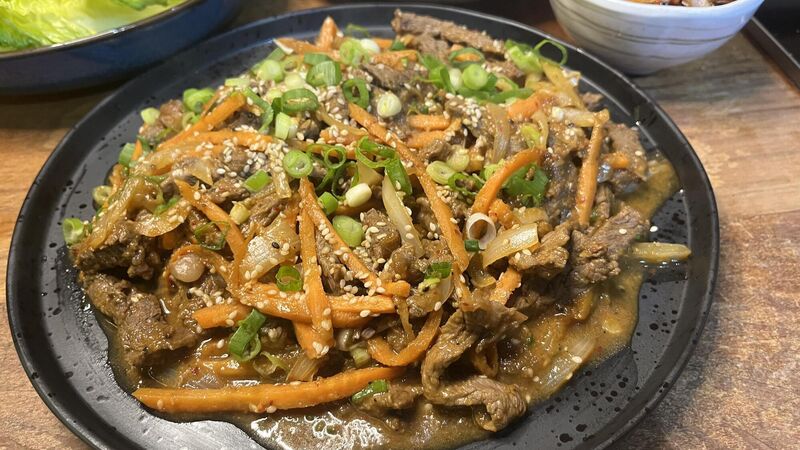Colm O'Gorman: Brighten dark January days with my beautiful Bulgogi Beef recipe

Bulgogi Beef is a beautiful Korean barbecue dish, but it can be easily cooked on a griddle or in a skillet.
The holidays are over, and most of us are back to work, or school or whatever our everyday usually is. As is often the case at this time of year, the airways, papers, and social media are littered with content about New Year’s resolutions, fitness goals and worst of all in my view, detox diets. Do not get me wrong, I do not begrudge anyone whatever works for them to get their year off to a good start, or a focus to get through what can be a bit of a miserable month, but I am always at a loss to understand why that often seems to involve making it even more miserable by denying themselves comfort and pleasure. If there was ever a month to eat comforting, warm and satisfying food, then January is most definitely it. After all the rich food and indulgence of the holidays, an adjustment may well be needed, but there is no need to make long, dark January days even more miserable than they need to be.
Bulgogi beef
Serve your bulgogi beef with fresh little gem lettuce leaves, boiled rice, kim chi and some Korean style pickled onions.

Servings
2Preparation Time
2 hours 20 minsCooking Time
20 minsTotal Time
2 hours 40 minsCourse
MainCuisine
KoreanIngredients
450g rib eye steak
1 kiwi
3 tbsp soy sauce
2 tbsp honey
20ml rice wine or sherry
2cm fresh ginger root
2-3 cloves garlic
1 tbsp toasted sesame oil
A good grind of black pepper
1 tbsp gochujang (optional but recommended)
2 onions
2 carrots
3 spring onions
2 tsp toasted sesame seeds
To Serve
Plain boiled white rice
Leaves of a head of little gem lettuce
Kim chi
Korean Picked onions
Method
Start by thinly slicing the steaks. Do this when the meat is chilled as it will make it easier to cut. Use a very sharp knife to cut the meat into thin strips, about 3mm thick is perfect. Pop them into a bowl and make your marinade.
Peel the onions, roughly chop just half of one and set aside the rest for now. Peel and grate the garlic and ginger. Peel the kiwi. Pop all of those into a food processor, along with the soy sauce, honey, rice wine or sherry, sesame oil, and the gochujang.
If you are a regular reader of this column, you will be familiar with gochujang by now, a Korean chilli paste that is readily available from most Asian supermarkets. You can also quite easily make your own.
Blitz the marinade until smooth and pour it over the beef. Mix everything to fully coat the meat and marinade for two hours. If you use Asian pear instead of kiwi fruit, marinade the meat for four hours.
Peel and very thinly slice the carrot or cut it into strips. Slice the remaining onion. Wash and chop the spring onions.
When the meat is ready to cook, heat a large heavy based skillet or griddle pan over a high heat. When it is good and hot, add a little toasted sesame oil, and pop in the sliced onion. Reduce the heat to medium and stir fry the onions for two minutes. Now add the beef and the marinade to the pan. Cook for four to five minutes until the meat is almost cooked through and add the carrots. Cook for another two to three minutes and add half the chopped spring onion. Stir that in and remove the pan from the heat.
Serve the bulgogi beef on a platter, with the rest of the chopped spring onions and the toasted sesame seeds sprinkled over the top. To eat the dish, wrap some of the beef, rice and sides in a lettuce leaf and tuck in. You can also eat the beef with just rice and the kim chi and pickles on the side if you prefer.





